To date, at the flower beds and in flower beds, you can find a huge number of colors and flowering plants that are striking with their bright appearance and colorful blossoms. However, there are among them and more modest flowers that are a bit aside, but despite this, just fascinate with their tender beauty. Unusual, bright, beautiful fragrant flowers that will become an excellent decoration of any landscape design - all this can be said about the flower Heliotrop.
Once after seeing his bloom and breathing out the aroma of his flowers, you will forever love the heliotrope and will seek to grow this plant in your garden or on the windowsill. Heliotrop, landing and care for which in the open soil has a number of nuances and difficulties, is one of the favorite colors of modern gardeners and landscape designers.
In this article, consider the peculiarities of growing the flower of heliotrope, the main characteristics of popular species and varieties. We note the important rules for planting and care for this culture.
Features and description of heliotrope
Heliotrope is a rather well-known perennial semi-staple or herbaceous plant that belongs to the bouquet family. On the territory of Russia, this flower is grown as an annual plant in the open soil and as a long-term flower at home. Heliotrope is a guest from the tropics and subtropics, so often this unusual flower is classified in the conditional genus of the sun-plants - plants that turn after the sun. The inflorescence of heliotrope, like sunflower, always turns into the side where the sun shines. This is evidenced by the name of the flower. Translated from Greek it translates as the next sun. This culture has a few more names that appeared in Heliotrope in different countries of the world: in France it is called "Grass of Love" for a wonderful aroma, in England - "Cherry Pie", in Germany - "Herb of God" for the wonderful history of the flower . In our country, Heliotrope is often referred to as lishawing grass or lacrick beautiful.
There is a very beautiful legend about the occurrence of a heliotrope plant, which is associated with the gods of ancient Greece. The Greeks were told that the beautiful nymph cliah loved the god of the Sun Helios, but he loved another beauty - Princess Levko. Cliya was angry and slandered the princess in front of the father and the God of the Sun. After that, Helios returned to the sky, and a beautiful nymph, falling to the ground and stretching his hands to the sun, sobbed to the very death and accompanied his beloved look. The rest of the gods were complicated over the nymph and turned it into a flower - Heliotrop, who always turns the sun after the sun.
The entire genus of heliotropov has about 200-300 representatives who grow in nature in the territory of Mediterranean countries, South Asia and South America, as well as in some areas of Australia and even Russia. Often you can meet Heliotrope in the form of a weed on the European part of Russia and the Caucasus.
Heliotrope description:
- Heliotrope is a fragrant herbaceous plant, which is growing in nature as a perennial and belongs to one genus, that both forget-me-not, median, cucumber grass.
- A plant is growing in the form of a small branchy bustle, which in nature can reach a height of 2 m, and culture grows only by 50-60 cm.
- The stem is dense and strongly branched, completely covered with oblong, pointed leaves.
- The leaves of heliotrope are located once and are attached to the branches with shortcuffs, have a slightly sowed wavy or wrinkled surface. The top leaf plate has a dark green shade, and the bottom is a bit lighter.
- On the most tops of the stems, beautiful inflorescences are blooming, which in diameter can reach 10-15 cm.
- Flowers are very small, consist of 5 petals, very similar to lilac flowers. Collected in thyroid inflorescences.
- The color of the heliotrope varies from purple to dark blue and blue.
- Heliotrope flowers contain very fragrant and valuable essential oil, which is used in cosmetology and perfumery. Often planting the colors of heliotrope is carried out on an industrial scale.
- Inflorescences bloom within one month, after which the fruit appears in their place, which represents the price.
- After the total ripening of the price decays into 4 parts, in which the seeds of the heliotrope are located.
- Some types of heliotrope contain poisonous alkaloids in the stems and seeds, which are adversely affecting the human nervous system. However, these types in culture are not used.
- In 1552, Botany scientists first allocated a coloring substance from a heliotrope, which later called Lacmus. Until now, all chemists use special lactium strips to determine the acidity of the medium.
- Heliotrope is a thermo-loving plant, so in our climate is used as an annual. It is possible to grow heliotrope and at home. So he will grow for several years.
Variety of types and varieties of heliotrope
In nature, there are more than 200 different types of heliotrope, but only some of them were distributed in the culture. Consider the main characteristics of the most popular species and varieties of heliotrope in our gardens.
Heliotrope shielded
- This type of plant is the tallest that gives it special decorativeness.
- In height, the plant can reach about 100-120 cm.
- The bustice is formed by quite powerful stems, from which a large number of branches depart.
- Leaves of this type of heliotrope have an oblong shape and resemble a long boat. The top leaf plate is dark green, and the bottom is light green.
- In some varieties, leaves may be wrinkled.
- Blossom starts at the beginning of summer and lasts to the most frosts. It is for prolonged flowering that this kind of heliotrope has received its popularity among gardeners.
- On the tops of the stems bloom beautiful and dense inflorescences of blue or blue.
- The inflorescences diameter can reach 10 cm.
- Used quite rarely.
Heliotrope Peruvian
- This is the most common kind of heliotrope, which is universally grown by gardeners and landscape designers.
- It is often referred to as a tree view, since this plant grows in the form of a large spreader coastal.
- In height, the plant can reach about 40-60 cm.
- The stem is covered with reverse ovoid leaves with a slight nicking and wrinkled surface.
- On the tops of the branches are blooming beautiful and fragrant flowers of purple or bright dark blue shade.
- Flowers are collected in dense thyroid inflorescences, which in diameter can reach about 10-15 cm.
- It has a pleasant aroma that resembles a vanilla with cinnamon.
- It pleases with long blooming, inflorescences can decorate the plant to the first frosts.
- Widely used in landscape design for single and group landings.
Heliotrope Krasavsky
- This kind of heliotrope is not so popular among the gardeners, but has a beautiful appearance.
- It is a high scattery bush.
- In height can reach about 90-100 cm, while the width grows up to 120 cm.
- Kurasavsky heliotrope flowers have a pale-blue or white and blue shade and are collected in oblong and dense inflorescences.
Helliotrope Skeeling
- It is also widely distributed in Russia and is popular among gardeners.
- It is a dwarf view that is widely used for the design of borders and the edges of the flower.
- Differs on direct branched stem.
- Lancing leaves oblong with a beautiful wavy edge.
- On the tops of the branches bloom the beautiful tight inflorescences of a gentle purple shade.
- This kind of heliotrope can be planted along with other colors in the foreground of the flower bed.
European heliotrope
- It is a perennial herbaceous plant, which in the conditions of our climate is grown as an annual flower.
- The natural habitat of this species is the territory of the southern part of Russia, the Caucasus, South Asia.
- It grows in the form of a small bustle, which in height can reach about 35-40 cm.
- The foliage is oblong, has a yellowish green shade.
- It features simple white colors with beautiful curls.
- In our country, this plant is most often used as a medicinal and called debris.
Popular grade Heliotrop
- MINI MARIN Sort. It is distinguished by low growth, only about 35-40 cm. Inflorescences consist of beautiful purple-blue colors.
- The grade of the heliotrope "Maryn Dreaf". A low splashing bush, which in height can reach only 30 cm. Differs in bright inflorescences of the blue shade.
- Grade "Princess Marina". Also, the lowered grade of heliotrope, which grows only 30 cm. Flowers intensive bright blue shades inflorescences that have a weak pleasant fragrance.
- Grain Blue Heliotrope. In height, the plant of this variety can reach 40-45 cm. Inflorescences have an unusual purple tint and a pleasant fragrance that resembles the smell of a cherry pie.
- Grand Catchworth. The variety is distinguished by a very strong smell. Inflorescences are painted in an intense purple tint.
- Grade "Iova". The plant is low growth, which is distinguished by strong branching. Stems are covered with dark green foliage and beautiful inflorescences of a dark purple shade.
- Grand "Alba". The heliotrope of this variety is characterized by white colors collected in beautiful inflorescences, and vanilla flavor.
- Grade "Baby Blue". A low-spirited plant, which is great for garden pots and containers. It has a strong smell and lilac-purple inflorescences.
Geliotrope reproduction: the most popular ways
The propagation of heliotrope is a rather complicated process that requires a lot of attention and effort. First of all, it is worth knowing that this plant breeds seeds and cuttings. The second method of reproduction is suitable for warm regions of the southern part of Russia. Consider the features of the methods of reproduction of heliotrope.
Seed reproduction of heliotrop
- This is a method of rather long and time consuming, however, in the conditions of our harsh climate, this is the only way to grow a beautiful plant of heliotrope on its plot.
- The main rules for the reproduction of heliotrope from seed is that it is not worth using seeds collected yourself. Such a landing material may be bad, and then low flowers will grow with faders and small inflorescences.
- For reproduction, it is best to use seeds of famous brands that guarantee their quality and germination. Acquire them is necessary in specialized garden centers.
- It is also necessary to remember that the seeds of heliotrop are best grown in early seedlings. Only so you can get a flowering plant in 12 weeks after the appearance of germs.
- Seed seeds needed in February or in early March, but not later, otherwise the flower will not have time to bloom to the cold.
- First of all, it is necessary to prepare an soil mixture, which should consist mainly of peat and a small amount of sand.
- Before sowing, the soil is recommended to roll or disappear to destroy the existing bacteria that can infect the plant.
- After that, the soil is poured into suitable containers, seal it and sowed over the surface of the seed of heliotrope.
- From above, the seeds can be sprinkled with a small layer of the same soil, but its thickness should be not more than 1-1.5 mm. After sowing, the surface you need to pour out of the spray and cover the tank above the glass or film to create a greenhouse effect.
- The container must be put in a warm place where the temperature is approximately 18-20 degrees.
- The first shooters may appear in about 5-20 days, after which the container is open and placed on the windowsill.
- When seedlings appear 2 leafs, they can be seen in separate pots.
- 2 weeks after that, finish the young plants with fertilizer for seedlings.
- In the open ground, such seedlings are planted in approximately in June. Blooming heliotropic grown from seeds later, closer to autumn.
Geliotrope reproduction of cheesens
- This method for breeding the heliotrope is simpler. It gives better seedlings, but in our climate it is quite difficult to implement it.
- To obtain high-quality cuttings, one adult bush heliotrop needs to be digging, transplanting into a pot and put in a greenhouse or room with a temperature of 8-15 degrees.
- At the end of February, you can cut off the shoots for cuttings. All stalks should be about 10-12 cm. We must have 3-4 intercosals.
- After that, you need to remove the foliage from all the cuttings.
- Next, the cuttings can be placed for several hours into the solution of the rooting agent to accelerate growth.
- After that, prepare the soil mixture, which should consist of sand and humus, pour it into a suitable container.
- In the prepared soil, root the cuttings and put boxes in a greenhouse or a greenhouse with good ventilation. It is important that during rooting the temperature was about 25 degrees.
- Caring for the colors of the heliotrope during this period is the daily watering.
- After about 3 weeks, the cuttings are searched into the pot, where they contain the first time in the shade and often watered.
- In the open ground, the plants are transplanted in June or in July, pre-pinning the tops for better bushes.
Preparation Before planting Heliotrope in Open Soil
Heliotrop is a tropical plant, which in nature is a perennial and is accustomed to a large number of sun. In our conditions, it is much more complicated to grow it, while it is important to carefully prepare. All preparation lies in the acquisition of high-quality planting material and choosing a place to land a heliotrope.
Selection of grade and seedlings Heliotrope
- Among the gardeners and landscape designers are particularly popular with such types of heliotrope as European, Peruvian and Skeeling.
- It is precisely the varieties of these varieties to preferably plant on their sites, since they have long blossoms and relative resistance to cold.
- Sorts choose according to the well-thought-out garden composition, since all plants have different heights. Higher acquire as a background, and the lowest varieties are suitable for the design of borders.
- If you have no opportunity to raise the seedlings of the heliotrope yourself, young plant saplings can be bought.
- It is necessary to acquire high-quality planting material only in specialized garden centers and nurseries that are professionally engaged in rare plants. This is quite rare in our flower beds, so buy really high-quality planting material is difficult.
- Before buying seedlings, be sure to check them for damage and signs of diseases.
Choosing a place to land a heliotrope
- The planting of the heliotrope begins with a properly selected place.
- This is a tropical plant, so it is necessary to plant it in open solar sites.
- Many gardeners are still recommended not to disembark this flower under the right sunlight, but to provide him with a small half.
- The selected place should be protected from strong wind and drafts.
- The perfect place for the heliotrope will be flower beds and flower beds. They are well adjacent to other blooming plants. The lowest varieties can perfectly grow around coniferous crops.
Choice and preparation of soil for planting heliotrope
- These flowers prefer to grow on fertile soils with great content of humus.
- It is also desirable that the soil has a loose place in the chosen you have been loose and I missed moisture and air well.
- Drainage plot is the perfect choice for planting a heliotrope.
- Before planting the plant, it is important to carefully prepare the soil. To do this, it must be swap, approximately one bayonet shovel. During processing, it is recommended to add organic fertilizers and a bit of large river sand for looseness.
Heliotrope landing - step-by-step instruction
- In the open soil, the seedlings of the heliotrope are planted when the last frosts will be afraid. Usually this process falls on June, since the growing plant seedlings occupies a lot of time.
- Before the landing itself, it is recommended to quickly explode the soil on the selected area, as the plant prefers to grow on loose and light soils.
- Prepare boarding wells. The size of which should be a little more root seedlings with an earthen room. If you plan the seedlings in peat pots, then the size of the well should be a little more. There is a distance of 15-20 cm between individual landing wells, since Heliotrope is greatly growing.
- At the bottom of each pocket, pour a bit of a dung area and sheet soil.
- After that, carefully remove the seedlings from the pots and put in the wells. Try not to damage the earthen com.
- Pull the seedlings soil, carefully pressing the ground to the base of the plant stem.
- After landing, young plants are recommended abundantly to pour and climb the soil around them with peat or sawdust - this will reduce the amount of loosening and prevent moisture evaporation.
Heliotrope Growing Agrotechnics: Secrets and Nuances of Care
Heliotrop care is not absolutely no difficulty. Many gardeners compare this process with the cultivation of ordinary weeds.
- Watering. If you correctly organize watering heliotrope, then further care will not be any problems at all. It is important to water the plant regularly and moderately. Heliotrope is a moisture-loving flower, but it does not endure an extra moisture. Focus on with irrigation to the soil - if it dried, it's time to water. In the arid summer, the amount of irrigation to increase. This plant also reacts very well to spraying.
- Loosening and mulching. After each irrigation, it is recommended to carefully loose the soil between colors. Parallel to remove all weeds. Periodically, you can plug a mulch layer to reduce the amount of loosenings.
- Stealing heliotrope. If you grow seedlings of the heliotrope yourself, then making feeding should be started at this stage. After transplanting to open ground, fertilizer should be made every 2 weeks. To do this, use liquid complex fertilizers. It is necessary to feed the heliotrop during the entire season.
- Zimovka heliotrope. This is a tropical plant that is not able to grow in winter in the conditions of our climate. However, you can save Heliotrope. For this, before the onset of the cold, it is necessary to dig and transplant to the pot. After that, it is placed in a well-ventilated room with a temperature of about 10-15 degrees. During this period, it is important to protect the flower from direct sunlight.
- Fighting diseases and pests. Occasionally, the plant may be damaged by a spider tick and aphid. In this case, it is important to process it with accotlic on time. With the initial manifestation of gray rot, treat the flower of fungicides. With a protracted disease, the plant is removed.
Photo Heliotrop
Heliotrope is a beautiful and gentle flowering plant that has just an incredible smell of vanilla. Planted on the site, it will become a real exotic decoration of a flower bed or flower beds.

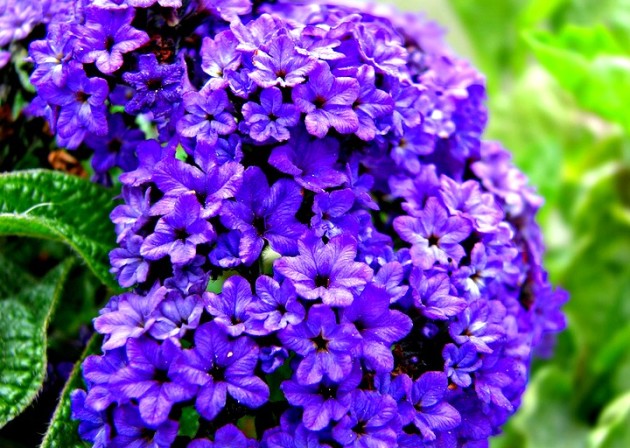
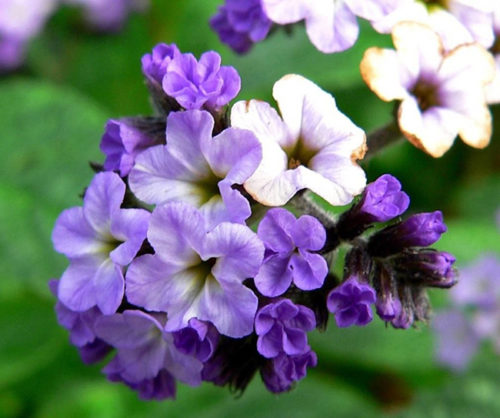
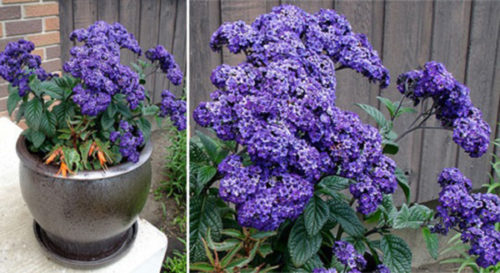
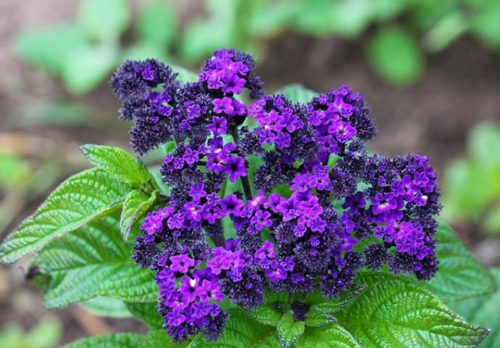
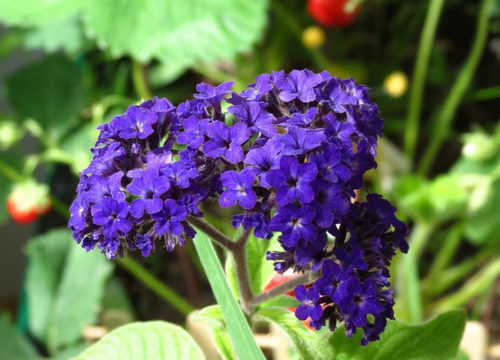
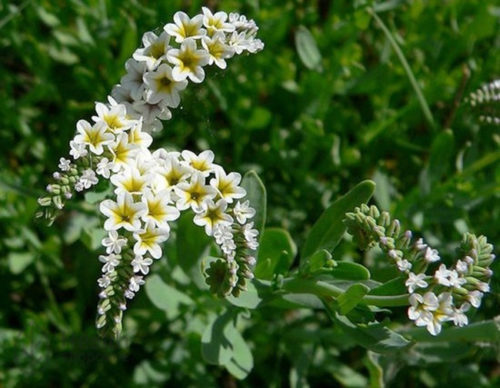
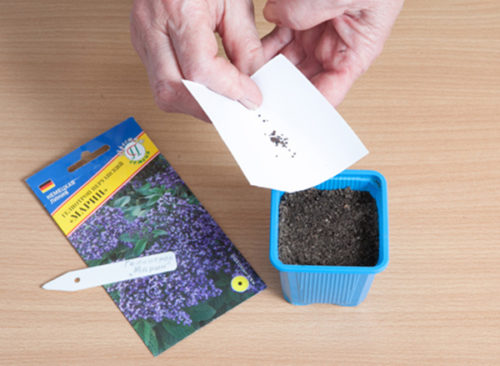
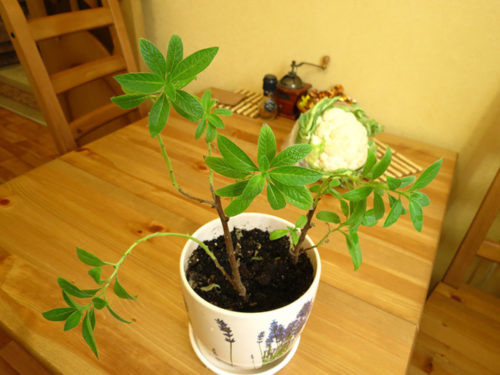
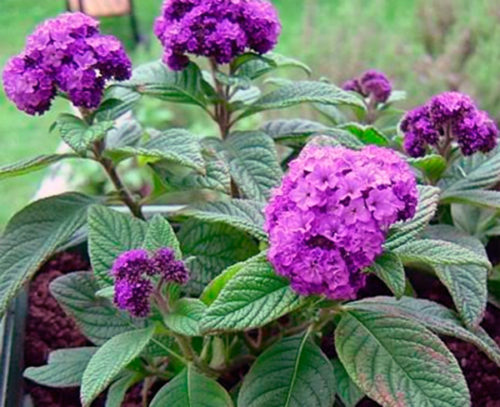
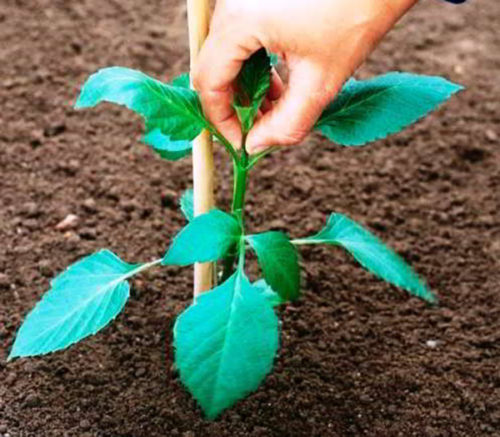
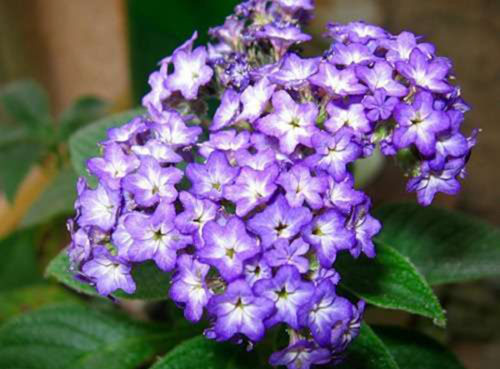
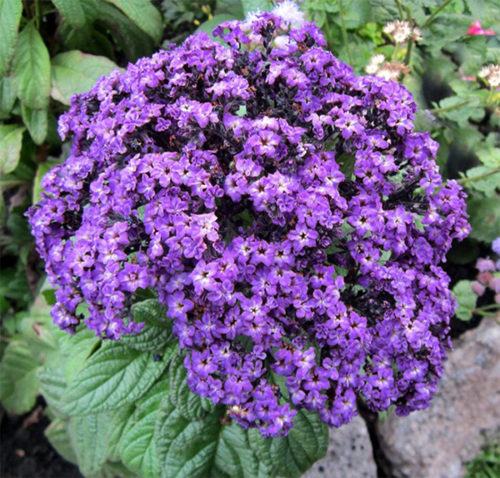
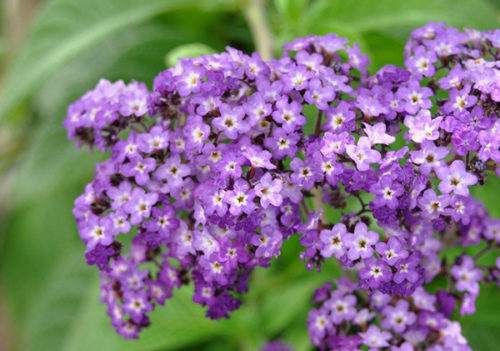
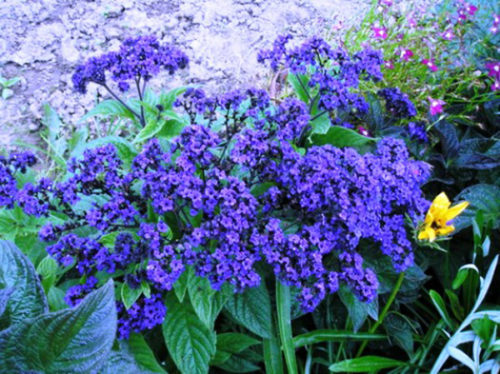
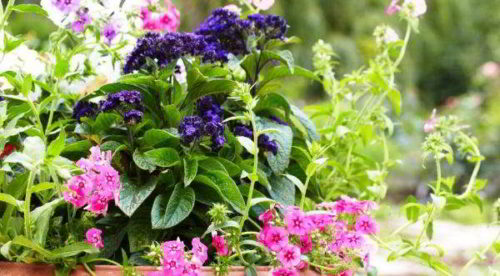
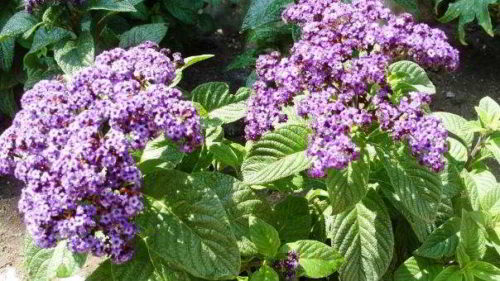












 Start a discussion ...
Start a discussion ...